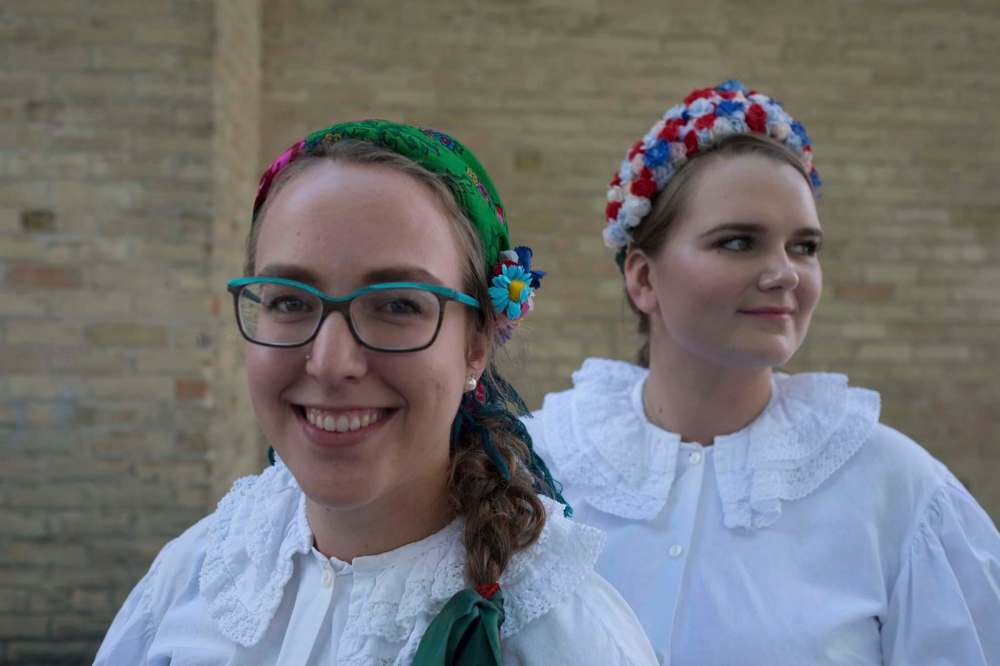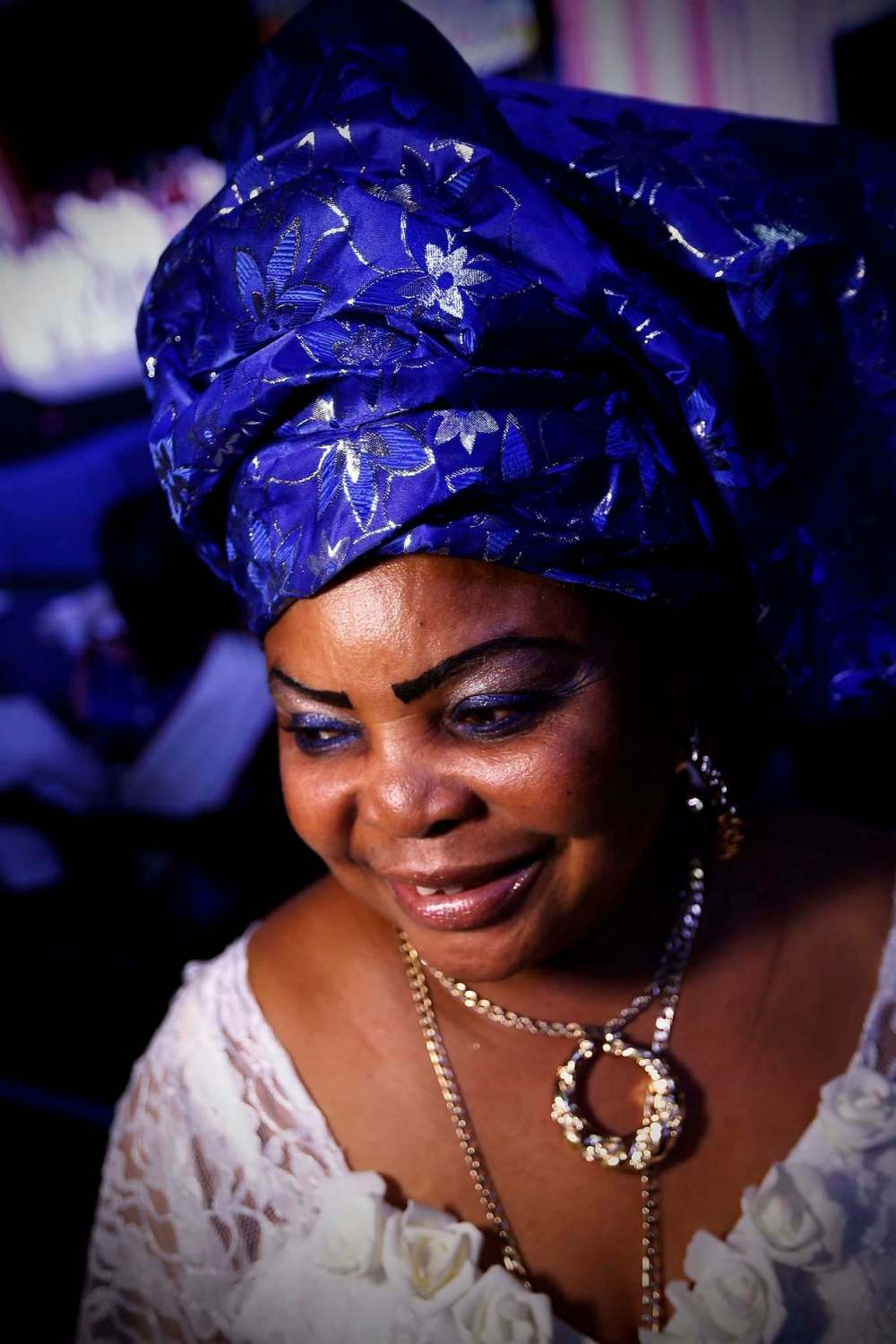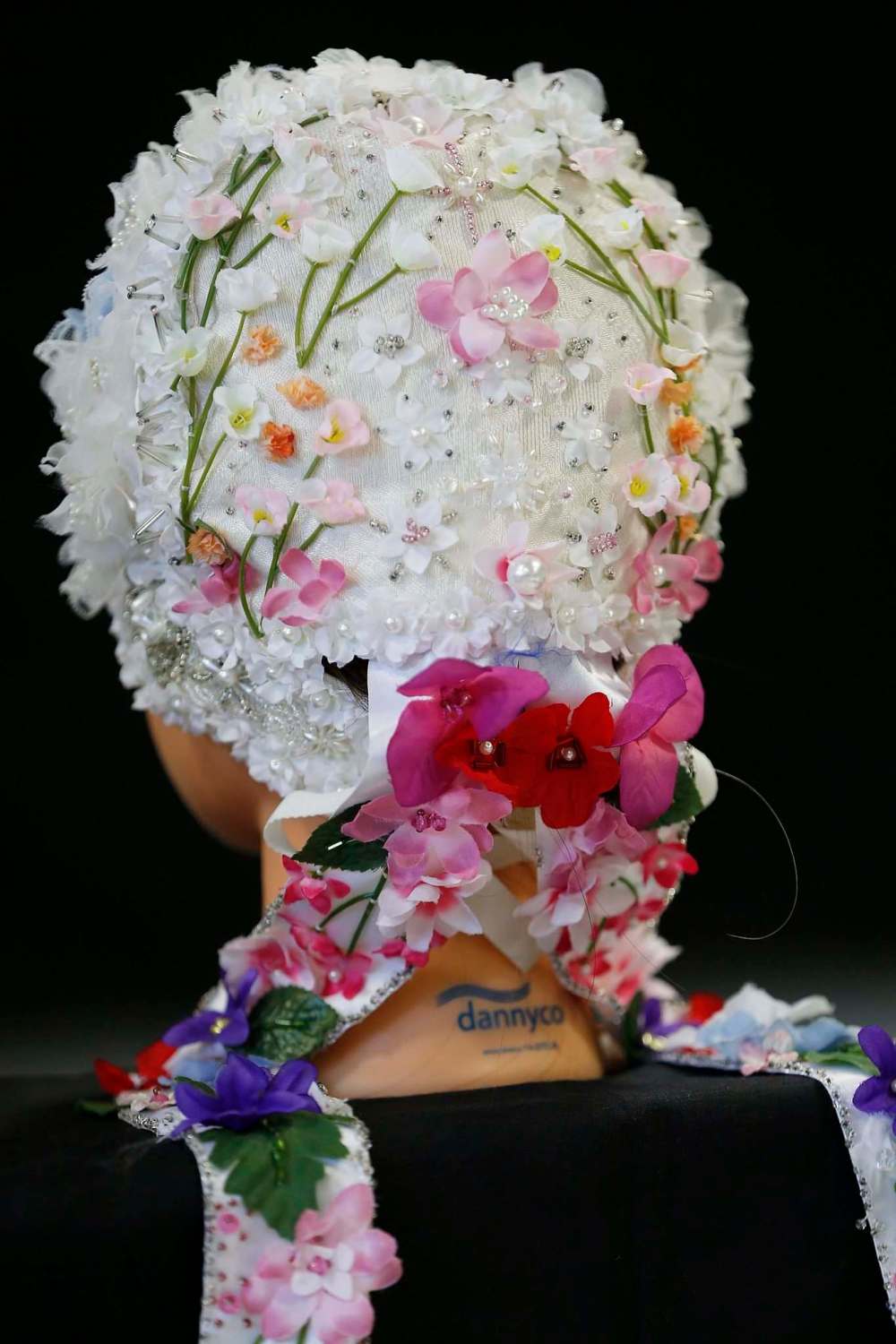More to headpieces than fashion
Every scarf, wreath and sombrero has a story
Advertisement
Read this article for free:
or
Already have an account? Log in here »
To continue reading, please subscribe:
Monthly Digital Subscription
$0 for the first 4 weeks*
- Enjoy unlimited reading on winnipegfreepress.com
- Read the E-Edition, our digital replica newspaper
- Access News Break, our award-winning app
- Play interactive puzzles
*No charge for 4 weeks then price increases to the regular rate of $19.00 plus GST every four weeks. Offer available to new and qualified returning subscribers only. Cancel any time.
Monthly Digital Subscription
$4.75/week*
- Enjoy unlimited reading on winnipegfreepress.com
- Read the E-Edition, our digital replica newspaper
- Access News Break, our award-winning app
- Play interactive puzzles
*Billed as $19 plus GST every four weeks. Cancel any time.
To continue reading, please subscribe:
Add Free Press access to your Brandon Sun subscription for only an additional
$1 for the first 4 weeks*
*Your next subscription payment will increase by $1.00 and you will be charged $16.99 plus GST for four weeks. After four weeks, your payment will increase to $23.99 plus GST every four weeks.
Read unlimited articles for free today:
or
Already have an account? Log in here »
Hey there, time traveller!
This article was published 09/08/2016 (3376 days ago), so information in it may no longer be current.
When visiting any Folklorama pavilion, the bright and ornate clothing is always something to be admired. While styles and textiles vary greatly from country to country, most share a common element — a headpiece.
Be it a hat, a scarf, a hairpin, a babushka or a bonnet, almost every pavilion has a special accessory that helps top off its traditional costume. Many are used as a way to outwardly display status and wealth (times haven’t changed too much in that respect), but in many cultures, the headpiece also holds specific meaning for women, with different styles conveying marital status and eligibility.
We asked six pavilions from Week 2 to tell us about their most important and recognizable headpieces. Here are the responses we received:
Head wrap — Africa
The head wrap originated in sub-Saharan Africa, and was often used to convey modesty, spirituality and prosperity. Even men in Africa wear head wraps to symbolize wealth and social status. For centuries, head-wrapping has been a way Africans have been able to non-verbally communicate their literal place in life.

Head wraps have served as a headcover for Africans, mostly women, since at least the early 1700s. It is believed African cultures used head wraps before the days of slavery so men could show off their wealth and the level of their social status, and so women could prove they were prosperous and spiritual.
Head wraps also serve a practical function in protecting the head from the rays of the sun. In West Africa, head wraps are referred to as “gele” in Yoruba, “ichafu” in Ibo or “duku” in Akan, and can be used by any woman on any day for any purpose, either for fashion or for protection.
However, it is usually worn on religious occasions and during other official ceremonies, such as marriage ceremonies, church services, funerals, outdooring of a new baby (similar to a christening) and festivals. The headgear comes in different colours, prints and fabrics, the specifications of which depend on the person’s tribe, the occasion and their status.
One cultural significance of the African head wrap is that African women typically secure the wrap using a knot at the base of the crown, which leaves the neck and forehead exposed. Part of the reason for this is to make the facial features appear striking so that anyone that wishes to look upon her will see her face rather than looking down at her body. There are variations in the tying, which can differ the location of the knot, depending on the style.
— Submitted by Frank Indome,
media chairman at the Africa Pavilion
(located at Holy Cross Gym, 290 Dubuc St.)
Wianek and chustka — Poland
Wianek is a colourful circular/wreath arrangement of flowers worn by unmarried females, and a chustka is a decorative kerchief worn by married women.

The wianek was typically made by young girls wanting to find love and to look beautiful. Flowers grew wild in fields; girls collected them and used them to weave a wreath, which they wore on their heads.
The flowers that were most commonly chosen were poppies, daisies and bachelor’s buttons, but any flower found in the region was used, which is why different costumes have different-looking wianki. The wreaths were a way for girls to adorn themselves, appearing more beautiful, and as a result, more interesting to young single men.
Traditionally, there is a ceremony at Polish weddings called Oczepiny, which is where the bride officially becomes a married woman. After the church marriage, the bride sits in a chair in the middle of the dance floor with her bridesmaids, mother, godmother, grandmothers and mother-in-law all standing around her holding lit candles.
The mother of the bride removes the wianek from her head, and as the women around her sing, the mother ties the chustka on the bride’s head. This symbolizes the bride officially being recognized as a married woman. If a family was wealthier, they may have been able to purchase a specific headdress the bride would wear during the marriage ceremony in church that would then be removed in the Oczepiny ceremony.
During one festival in the central part of Poland, girls make wianki and send them off down the river. The girls do this to find love. The tradition is that if a boy retrieves the wianek, than they will marry quickly, but if no boy retrieves the wianek, the girl may have a long wait. If it gets stuck in the weeds or disappears, the girl will never get married.
— Submitted by Alexandra Malkiewicz,
media chairwoman at the Warsaw-Poland Pavilion
(located at Glenwood Community Centre, 27 Overton St.)
Vinok (flower crown) — Ukraine
The Vinok (wreath/flower crown) is easily the most recognizable headpiece from Ukraine and dates back to pre-Christian times. It was a symbol of a young woman’s purity and availability to wed.

The could range in many sizes, including a very large and elaborate one for her wedding day. Today they are usually seen as being compact to allow for ease of movement while dancing.
Traditionally, 12 flowers and herbs would be woven into the wreath — mallow, viburnum, immortelle, yarrow, forget-me-nots, marigolds, periwinkle, lovage, cornflower, daisy, poppy and hops.
Each colour of the ribbons decorating the wreath also had its own meaning; for example, green was the symbol of beauty and youth, purple stood for wisdom, crimson symbolized sincerity and cordiality and pink was for the girl’s rich dowry.
Once married, custom held that a woman would not wear a Vinok again. They would cover their hair in cloth as a sign of modesty.
That gave rise to the ever-iconic image of older Ukrainian women in babushkas.
— Submitted by Scott Gordon,
media chairman at the Spirit of the Ukraine Pavilion
(located at Soul Sanctuary, 2050 Chevrier Blvd.)
Flowers, peineta, pano and sombrero cordobés — Spain
The most important complement that we wear with the Spanish cultural attire is flowers.

When we are wearing our vestidos flamencos — our skirts — when we dance flamenco, we make a low bun in our hair and we put some flowers on one side or on the top of the head.
Peineta is a feminine ornament for the hair that has a convex body and a set of spikes fitted into the bun. It is often used with a mantilla — a lace or silk shawl worn over the head and shoulders.
Originally they were made of nacre (mother of pearl) but have gradually entered the orbit of synthetic material (plastic).
For folkloric dances, the pano (pañoleta) is worn, which is a triangular shape piece of cloth placed on the top of the head, using the two ends to tie it and adjust it.
As well, there is the sombrero cordobés, a traditional hat made in the city of Córdoba, Spain, worn in a large part of Andalusia. In the Spanish-speaking world outside of Andalusia, the term can simply mean “wide-brimmed hat.”
— Submitted by Maria Da Costa Moreda,
media chairwoman at the Spain Pavilion
(located at St. Demetrios Greek Orthodox Church, 2255 Grant Ave.)
Area Baranja, Area Pokuplje and Slavonska kraljice – Croatia
The Area Baranja is a crown, or “kruna” worn by the bride for a wedding.

The more beads of the crown and more elaborate it was indicated how wealthy the family was.
The Area Pokuplje are the red or white hats that have long ribbons full of beads and mirrors.
The red hats were for married women and white hats were given to the unmarried women.
The nicer the hat was decorated indicated how good the woman was as a homemaker or how good she will be as a wife.
These hats were made here by the dance group Croatian Dawn of Winnipeg, and each hat took six months to make by hand.
Slavonske kraljice is a black hat with wheat flowing out from the top.
A dance was danced to ensure crops would be successful and plentiful. This is from region of Đakovo in Slavonia, in eastern Croatia.
— Submitted by Janet Zorica
co-ordinator at the Croatian Pavilion “Zagreb”
(located at West Kildonan Collegiate, 101 Ridgecrest Ave.)
Zavijacka and avba — Slovenia
Both headpieces were worn in the second half of the 19th century.

The avba was originally used as a wedding headpiece and also showed the bride’s family wealth — the more elaborate the avba, the wealthier the family. Today the avba is most visual element of the Slovenian costume and is still worn during festivals in Slovenia.
The zavijacka was worn by single ladies during the wedding celebration. Again, the more elaborate the headpiece, the wealthier the family of the young lady.
Both headpieces are handmade. The gold sequence is an updated model as the originals were made of gold thread and beads. A pattern is created whereupon the beads are sewn on a black fabric. Cardboard is used as a backing to give the headpiece its form and support.
Lace is added all around the edges to frame the face. A white kerchief is then sewn onto the completed beaded headpiece to create the zavijacka.
For the avba, a cardboard crown is sewn together to create height. The crown is then covered with white gathered fabric and the beaded headpiece is sewn to the front of the crown. A beautiful bow is added to the back of the avba for decoration.
Both headpieces are fastened at the back of the neck with two ties.
—Submitted by Kristina Majowski,
choreographer and volunteer at the Slovenija Pavilion
(located at Sargent Park School, 2 Sargent Park Pl.)


